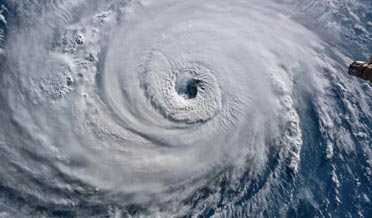Air Conditioning Hurricane Preparedness – Start Your Preparation Now!
The National Oceanic and Atmospheric Administration (NOAA) is set to predict the 2022 Atlantic Hurricane season in a few days.1 Early indication is that it will be active and storm intensity seems to have increased over the past decades. Residents in coastal communities should take measures to prepare homes and lives for a hurricane event this year. As part of these measures, make sure you follow our Air Conditioning Hurricane Preparedness Tips!
Measures to Take Before a Storm
While NOAA makes predictions for the 6-month hurricane season, The National Hurricane Center actually tracks storms as they develop over the south Atlantic. When a significant storm approaches land, they issue a warning 36 hours in advance to let residents make final Air Conditioning Hurricane Preparedness steps for the storm. However, some preparations should be made well in advance of a hurricane.
Schedule Routine Maintenance
Both your HVAC manufacturer and HVAC professionals recommend annual maintenance to help your system perform efficiently over many years. Preventative maintenance includes cleaning dust buildup in hard-to-reach places, inspection, and testing key electrical components, and paying close attention to the refrigerant gas needed for proper function.
If your system is poorly maintained before a hurricane puts great stress on the air conditioner, it can sustain greater damage from the storm.
Air Conditioning Hurricane Preparedness: Protect your Outdoor AC Unit
- If your outdoor condenser unit is in a low-lying area, consider elevating it to avoid water damage. It should be set on a concrete slab as a firm foundation.
- Tie-Downs. Make sure your condenser unit is securely fastened to the concrete slab with hurricane tie-downs. While it may appear large, it is constructed of lightweight material and can be moved by violent winds.
- Check with the manufacturer for a hurricane weather-proof covering for the AC condenser unit. Local home improvement stores may also carry them. A covering, installed after the AC has been powered off, can prevent water damage from heavy rain. Be sure to remove the cover before restoring power to the air conditioner.
Purchase Emergency Supplies in Advance
State and local governments provide emergency preparedness plans that encourage you to purchase food, water, flashlights, batteries, first aid kits, etc. You are encouraged to make these purchases in advance of a hurricane warning to make sure supplies are available.
Measures During the 36-Hour Warning
Anticipate that hurricane-force winds (+74 mph) will damage the power grid and cause a power outage. In the process, power will blink on and off several times; each time that happens, it creates a power surge. Since even small power surges can damage computers, we plug sensitive equipment into power strips with surge protectors.
- Your HVAC system may have a power surge protector installed inline to protect the system.
- Whether your system has a power surge protector or not, turn off your HVAC system during a hurricane to protect it from potential damage.
- Turn your thermostat to the Off position
- Flip the breaker at your electrical service panel for both AC and furnace
Cool Down
Knowing that you will turn the AC off for an extended period, use the 36-hour time period to cool your house down. Lower the temperature a few degrees, anticipating the warm and humid air outside will quickly move indoors. Close blinds and curtains, even if your windows are covered. Continue to use ceiling and floor fans for as long you have power.
Measures to Take After a Storm
After the storm has passed and power has been restored, carefully follow the needed steps.
- Remove any cover you might have placed on the outdoors AC unit
- Check your power surge protector for the HVAC system. If it has tripped, reset it.
- Flip the breaker for your system at the electric service panel and wait a few minutes.
- Turn the thermostat to the COOL setting and set the temperature to the normal setting.
If your power is not restored, you will need to call an electrician. If your power is restored but the AC does not come on or does not cool properly, give All Cool a call.
Have Questions About Air Conditioning Hurricane Preparedness?
June begins the start of hurricane season on the Texas Gulf Coast. Let us help you with your Air Conditioning Hurricane Preparedness this season by calling AllCool AC & Heating at 281-238-9292 or contact us via email.

1 https://www.noaa.gov/media-advisory/noaa-to-announce-2022-atlantic-hurricane-season-outlook

